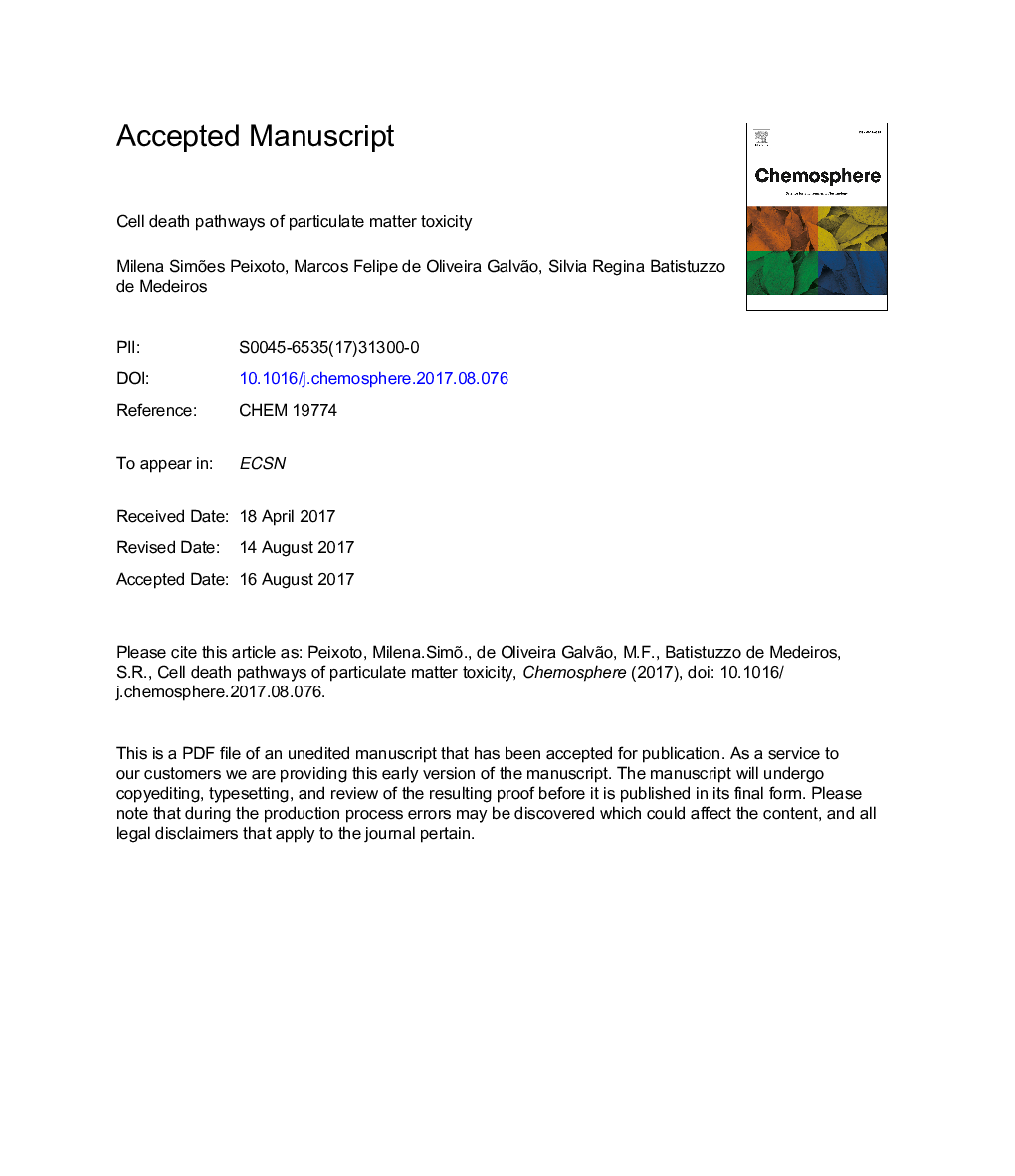| Article ID | Journal | Published Year | Pages | File Type |
|---|---|---|---|---|
| 8852961 | Chemosphere | 2017 | 64 Pages |
Abstract
Humans are exposed to various complex mixtures of particulate matter (PM) from different sources. Long-term exposure to high levels of these particulates has been linked to a diverse range of respiratory and cardiovascular diseases that have resulted in hospital admission. The evaluation of the effects of PM exposure on the mechanisms related to cell death has been a challenge for many researchers. Therefore, in this review, we have discussed the effects of airborne PM exposure on mechanisms related to cell death. For this purpose, we have compiled literature data on PM sources, the effects of exposure, and the assays and models used for evaluation, in order to establish comparisons between various studies. The analysis of this collected data suggested divergent responses to PM exposure that resulted in different cell death types (apoptosis, autophagy, and necrosis). In addition, PM induced oxidative stress within cells, which appeared to be an important factor in the determination of cell fate. When the levels of reactive oxygen species were overpowering, the cellular fate was directed toward cell death. This may be the underlying mechanism of the development or exacerbation of respiratory diseases, such as emphysema and chronic obstructive pulmonary diseases. In addition, PM was shown to cause DNA damage and the resulting mutations increased the risk of cancer. Furthermore, several conditions should be considered in the assessment of cell death in PM-exposed models, including the cell culture line, PM composition, and the interaction of the different cells types in in vivo models.
Related Topics
Life Sciences
Environmental Science
Environmental Chemistry
Authors
Milena Simões Peixoto, Marcos Felipe de Oliveira Galvão, Silvia Regina Batistuzzo de Medeiros,
